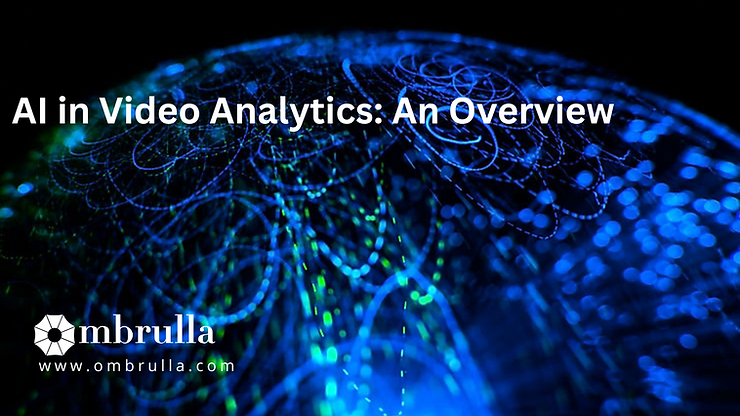
The automotive business is changing with the introduction of video analytics. The most recent AI and manufacturing collaboration promises a more powerful, efficient, and trouble-free factory working environment. AI-powered production is predicted to transform the way you operate by utilising technology such as video analytics, allowing you to do more with less effort and generate better, more polished outputs. The primary goal of AI-based Video Analytics is to detect temporal and spatial events in videos automatically.
The Benefits of AI Video Analytics or AI Visual Inspection
Video surveillance systems are tough to administer and maintain, especially when there are several of them. It is tough to keep track of everything that is going on, and dealing with it requires a lot of effort. This is not the case with video analytics. It evaluates video streams using a variety of sophisticated algorithms. When you examine camera images pixel by pixel, you will notice that almost nothing is lost. Analytics filters that intelligently adapt to unique security or commercial needs.
What are the Consequences of Video Analytics?
For many years, the amount of data acquired by video analytics technology has grown; data storage is becoming a concern as a result of the large amount of data obtained.
CCTV surveillance systems collect as much data as your team can handle. If your human resources are incapable of dealing with the knowledge you’ve deployed.
With more hacking and internet breaches reported every day around the world, the security component of the CCTV surveillance system is a major worry for your company’s day-to-day operations.
What are the technologies utilised in video analytics?
Video analytics is a challenging task; in video processing, a video is read frame by frame, and image processing is performed for each frame to remove the features from that frame. There are several image processing libraries to choose from. OpenCV is a computer vision and machine learning framework for image identification and video processing that is free and open source. Tensorflow, on the other hand, is a Google open-source machine learning toolbox intended for high accuracy object recognition. Video processing can be viewed as a synthesis of three key tasks:
Object Detection
It is a sort of computer vision that recognises and locates objects in an image or video. Using this identification and localization method, object recognition can count items in a scene and identify and record their exact positions, all while accurately labelling them.
Recognising Objects
Object recognition is a sort of computer vision that recognises objects in images or recordings. Deep learning and machine learning algorithms’ principal output is object recognition. When we look at a photograph or watch a film, we can quickly recognise characters, things, events, and visual information.
Tracking Objects
Object tracking is a computer vision discipline that attempts to track objects as they move across a video frame sequence. The majority of the time, the items in a soccer game are humans, but they can also be animals, cars, or other essential objects, such as the ball.
Analytics for Real-Time Video
Due to the large amounts of data generated by video cameras, surveillance teams are sometimes unable to manually examine the stored information in order to prepare a post-incident report.
Using Real-Time Alerts
When abnormal activity is detected, personal real-time warnings are issued, and video recognition technology boosts situational awareness. Here are a couple such examples:
Operators of video surveillance systems can customise a warning based on entity appearance resemblance requirements.
Alerts can be sent when a certain number of objects (vehicles or people) are observed in a specific location within a set time period.
If facial recognition technology is permitted, intelligence services may use it to quickly identify offenders and provide real-time warnings based on digital photographs taken from film or imported from outside sources.
How does Video Analytics work?
The design of a solution may differ depending on the individual use case, but the scheme remains the same, so there are two ways to review video content: in real-time, by configuring the device to trigger warnings for specific events and accidents that occur in real-time, or in post-processing, by running specialised searches to enable forensic investigation activities.
Video Analytics Solutions
There are numerous off-the-shelf AI-based Video Analytics systems available, ranging from traditional surveillance platforms to more complex situations like smart homes or healthcare software. If one of these popular solutions meets your needs, it could be a potential alternative for you. Perform some kind of programme change or parameterization, and these implementations only provide a limited amount of freedom. Most organisations, however, use a video analytics strategy, which necessitates more specialised solutions, to collect unique data in order to achieve distinct goals.
Conclusion
We benefit from AI-powered Video Analytics tools in our daily operations. Many businesses can benefit from this technology, particularly since the sophistication of possible applications has increased in recent years. Video analytics results in more consistent and less repetitious procedures. It is less expensive for enterprises, ranging from smart cities to hospital and airport surveillance controls. Individuals that are interested in retail and shopping malls. We urge that you speak with one of our professionals.

Leave a Reply